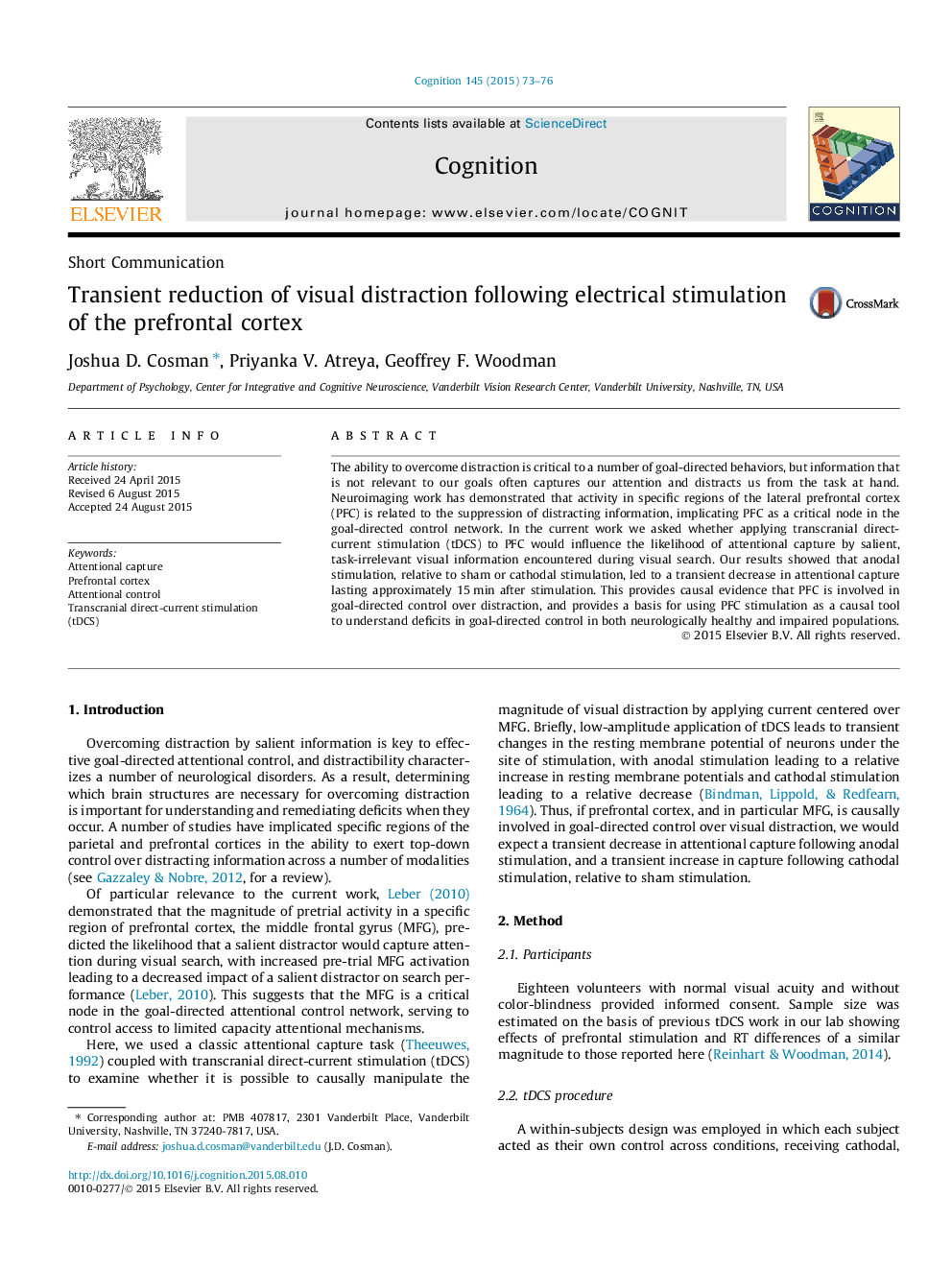| Article ID | Journal | Published Year | Pages | File Type |
|---|---|---|---|---|
| 7286572 | Cognition | 2015 | 4 Pages |
Abstract
The ability to overcome distraction is critical to a number of goal-directed behaviors, but information that is not relevant to our goals often captures our attention and distracts us from the task at hand. Neuroimaging work has demonstrated that activity in specific regions of the lateral prefrontal cortex (PFC) is related to the suppression of distracting information, implicating PFC as a critical node in the goal-directed control network. In the current work we asked whether applying transcranial direct-current stimulation (tDCS) to PFC would influence the likelihood of attentional capture by salient, task-irrelevant visual information encountered during visual search. Our results showed that anodal stimulation, relative to sham or cathodal stimulation, led to a transient decrease in attentional capture lasting approximately 15Â min after stimulation. This provides causal evidence that PFC is involved in goal-directed control over distraction, and provides a basis for using PFC stimulation as a causal tool to understand deficits in goal-directed control in both neurologically healthy and impaired populations.
Related Topics
Life Sciences
Neuroscience
Cognitive Neuroscience
Authors
Joshua D. Cosman, Priyanka V. Atreya, Geoffrey F. Woodman,
